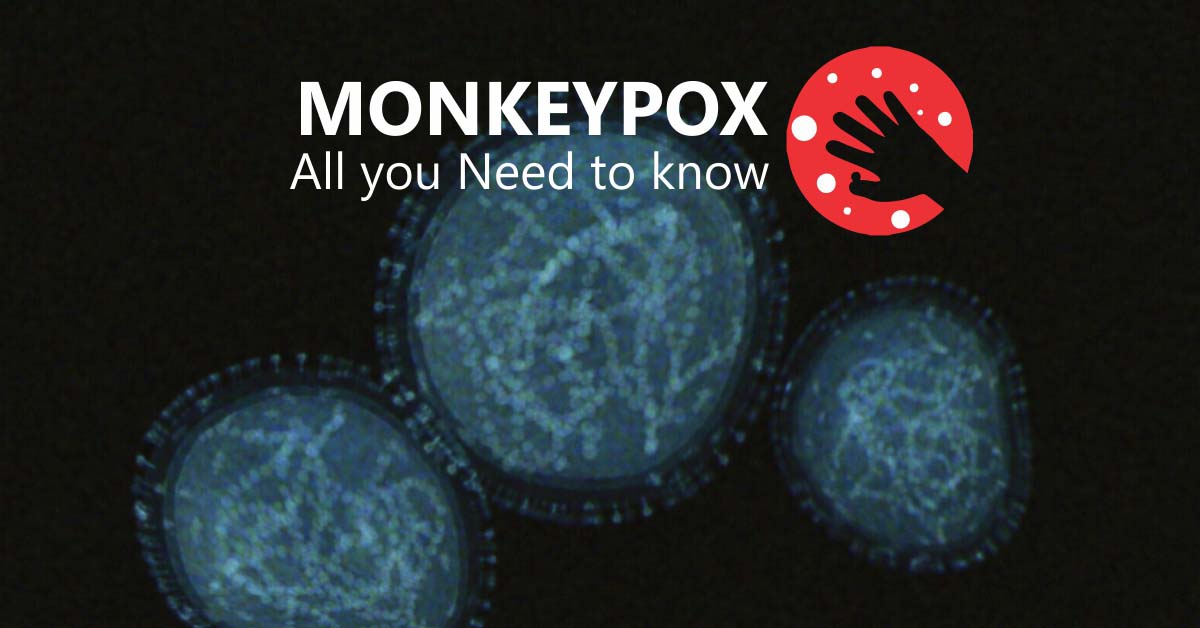Q: What is Monkeypox disease?
- It is a rare viral zoonotic infection that results in a rash similar to smallpox and is caused by the monkeypox virus.
Q: What is the current situation?
- No cases have been detected in Pakistan so far and there is no need to get panic.
- As of May 25th, 2022, > 200 confirmed cases of monkeypox have been reported from Europe, the USA, and Australia.
- Historically, it has been reported from central and western African countries.
Q: How is it transmitted?
- The disease can spread through contact with animals, infected people and materials used by infected people.
- Lesions are the most common means of transmission, such as skin-to-skin contact with someone who has rashes or sharing bedding or clothes that has been exposed to lesions, and respiratory spread occurs when a person has lesions in their mouth or throat.
- The virus enters the body through broken skin, the respiratory tract, or the mucous membranes (eyes, nose, or mouth).
- Animal-to-human transmission may occur by bite or scratch, direct contact with body fluids or lesion material, or indirect contact with lesion material.
- Human-to-human transmission can occur through large respiratory droplets.
Q: What is the incubation period (time from infection to symptoms)?
- Monkeypox infections typically last two to four week.
Q: What are the signs and symptoms?
- In humans, the symptoms of monkeypox are similar to but milder than the symptoms of smallpox.
- It begins with fever, chills, headache, backache, muscle aches, and exhaustion.
- A characteristic feature in monkeypox is enlarged lymph nodes (lymphadenopathy), unlike in smallpox.
- After 1-3 days of fever, the patient develops a rash, often beginning in the mouth, then the face, and subsequently spreading to other parts of the body (centrifugal distribution). Lesions progress through macules, papules, vesicles, pustules, and lastly, scabs fall off.
- In the current outbreak, the rash has mostly been confined to the ano-genital region and is likely related to sexual activity.
- The illness typically lasts for 2−4 weeks.
- One in 10 cases can lead to death.
Q: How is monkeypox diagnosed?
- Mostly, clinical diagnosis is enough (symptoms and rash).
- However, laboratory confirmation can include virus isolation, electron microscopy, PCR, ELISA, and immunofluorescent antibody assay.
Q: What is the treatment for monkeypox disease?
- There is no specific treatment for monkeypox virus infection.
- Only supportive care should be given.
- Some current antivirals, and Vaccinia Immune Globulin (VIG) can be used if available.
Q: What are the current preventive recommendations for the monkeypox virus?
- There are a number of measures that can be taken to prevent infection with the monkeypox virus:
- Avoid contact with animals that could harbor the virus (including sick or dead ones in areas where monkeypox occurs).
- Avoid contact with any materials, such as bedding, that have been in contact with a sick animal.
- Isolate infected patients from others who could be at risk for infection.
- Practice good hand hygiene after contact with infected animals or humans. For example, washing your hands with soap and water or using an alcohol-based hand sanitizer.
- Use droplet precautions and use personal protective equipment (PPE) when caring for patients.
- Isolation precautions should be continued until all lesions have healed.
Q: Is there a vaccine available for the monkeypox virus?
- Currently, there is no vaccine available for the general public.
- However, the JYNNEOSTM (Imvamune or Imvanex) and a live vaccinia virus (ACAM2000) have been licensed for prevention against smallpox and may be used for monkeypox, which is 85% effective.
Ref: CDC. https://www.cdc.gov/poxvirus/monkeypox/index.html
Uptodate: https://www.uptodate.com/contents/monkeypox/contributors
Note: Stay informed about the updated information on the disease for situation, diagnoses, treatment and prevention.





0 Comments